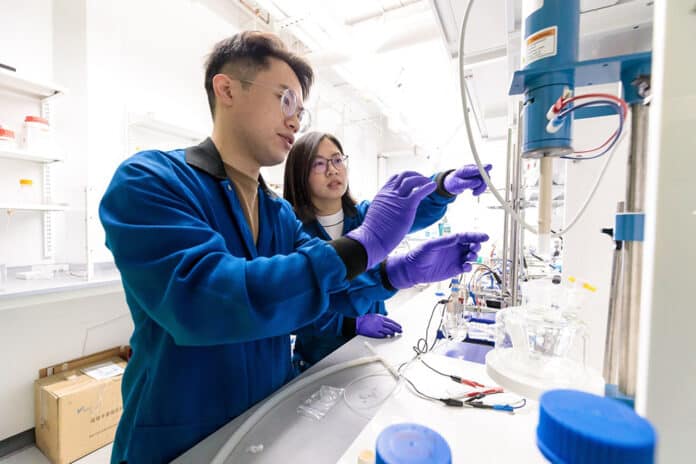With the rapid market penetration of electric vehicles, the demand for lithium-ion batteries will continue to explode over the next decade. Securing the lithium supply has become increasingly critical. However, the currently most extended lithium extraction method, the lime-soda evaporation process, is time-consuming, chemical-intensive, and applicable solely to concentrated Li brines.
Now, scientists and engineers are looking to unconventional water sources, including oil- and gas-produced water, geothermal brines, and rejected brines from seawater desalination.
By analyzing more than 122,000 unconventional water sources, Prof. Chong Liu from the University of Chicago and her team discovered that there’s enough lithium within these sources to make it worthwhile to extract. They also found that the composition of these sources – the amount of sodium, magnesium, potassium, and calcium – can affect the extraction performance of emerging technology, providing key insights for refining and optimizing it.
Researchers studied electrochemical intercalation, a highly selective method for extracting lithium that has not been studied widely among different water sources. The method uses electrode materials or membranes to drive ions from the water source into a solid structure. The intercalation process strips the water away from the ions, and the lithium ions bind to a material framework that has been designed to favor them.
These water sources also contain ions that are very similar to lithium ions in both mass and charge, namely sodium, magnesium, potassium, and calcium. Liu and her team wanted to better understand how the network of these ions affects the electrochemical intercalation selectivity of lithium. They found that sodium acts as a competitor for storage sites within the material framework, while magnesium and calcium can affect the charge transfer of lithium, affecting how selective the material ultimately is.
“This shows that the key challenge of the electrochemical intercalation method is how to improve lithium selectivity compared to sodium,” Liu says. “We show that is the main concern that scientists should consider going forward.”
Researchers hope these results will inspire scientists and engineers to identify materials that can increase lithium selectivity, and she and her team are also studying materials for this purpose.
